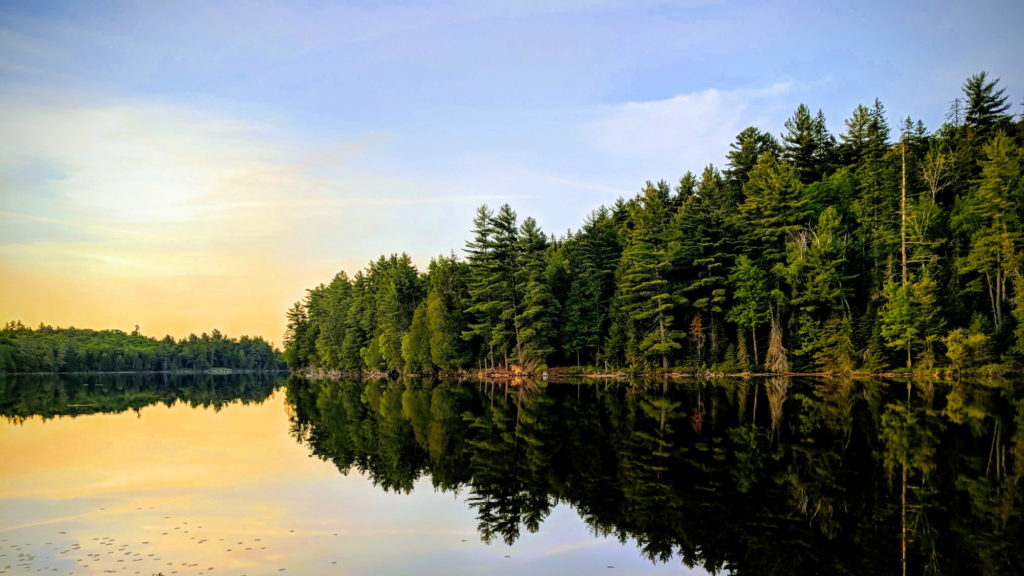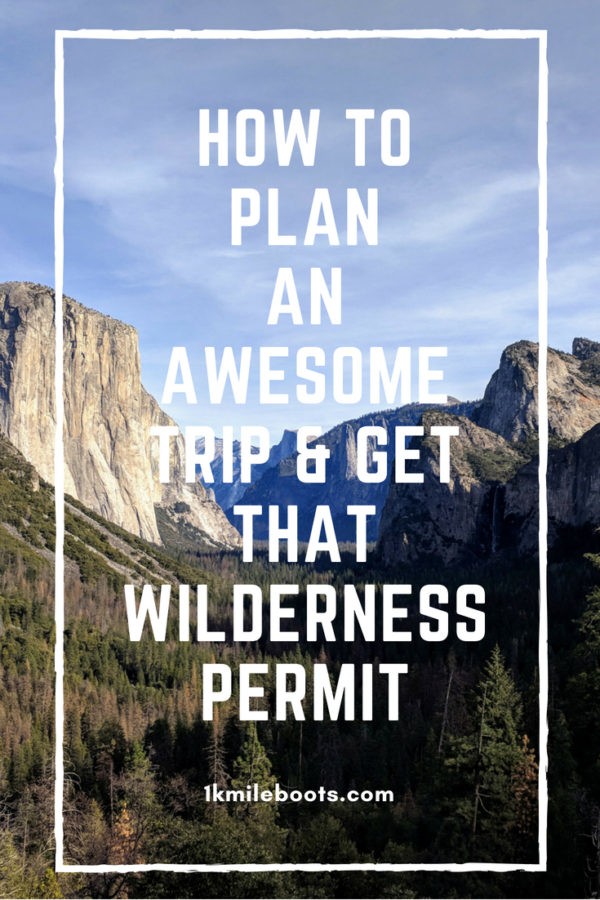Just a few days ago a friend asked me how she could go about getting a wilderness permit.
She was planning a trip but, having never planned one before, she was unsure of how the wilderness permit process worked.
Honestly, I’d never thought about it before since it’s become second nature to me. I usually plan my trip, apply for the permit and BAM! Permit has been granted.
Of course, there’s no magical genie at the other end of the computer granting wilderness permits – if there was I’d be able to get that darn permit for Yosemite I apply for…each year.
So that got me thinking, if she’s unsure of how to obtain a permit, does that mean others are as well?
Perhaps that’s the root cause as to why my friends are reluctant in planning their own trips and seem to rely on my husband or myself to plan it.
Well…your secret is out!
And I’ve come up with the most thorough explanation of the wilderness permit process, as well as advice on picking out the date, park and trail best suited for your trip.
But first….
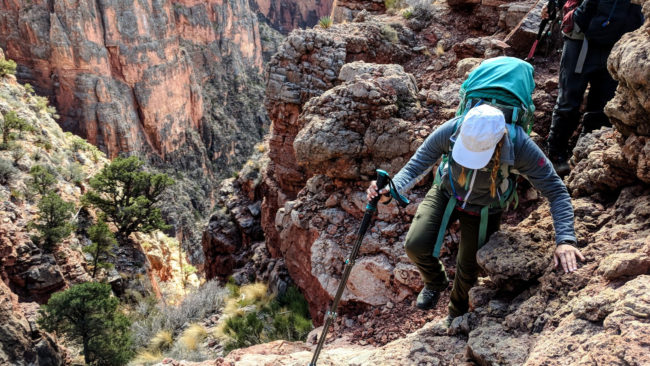
Why Do I Need to Apply for a Wilderness Permit?
With hundreds of thousands of people hitting the parks across the USA, particularly in the summer, the trails have been getting more foot traffic than usual.
This means that parks have to set permits and quotas for each trail for each day. This helps to regulate how many people are out in the park, where they’re supposed to be each day and help cut back on the wear-and-tear of the trails.
Wear-and-tear? Why is this a concern?
Well, to put it lightly, people mess up the trails more often than they think. And it’s expensive and time consuming to send rangers out to fix them.
How exactly do humans mess up these trails? Their just walking on dirt, right?
To a point, they do! Most people stick to the trail but some will try to cut through brush to shorten a trek or gain access to a specific area (all in the name of selfies). I’ve also see people cut switchbacks causing minor rock slides which disturbs deliciate vegetation erods the trail.
Permits also help to provide everyone with a solitary experience which is what a lot of backpackers look for when heading into the backcountry. It’s not as much fun trekking when you’re stuck on a trail behind a long line of people.
So bottomline, permits help to maintain the wilderness experience for everyone, protect the environment and keep you safe.
Wait. Keep me safe?
Permits also help rangers keep track of everyone in case of emergencies or if you get lost and they need to send Search & Rescue.
Well I can’t get a permit for my trek – I’ll just go without one.
NEVER go into the backcountry without a permit unless other rules apply! If caught by rangers you could be sent out of the park and potentially be slapped with a heavy fine. And while you might get away with saying you “can’t find it” or perhaps not even run into a ranger, still, it’s not worth it.
So, now that you understand why permits are important, let me help you get one!
How to Plan an Awesome Trip and Get that Wilderness Permit
Attention: My post may contain affiliate links! I may earn from qualifying purchases.
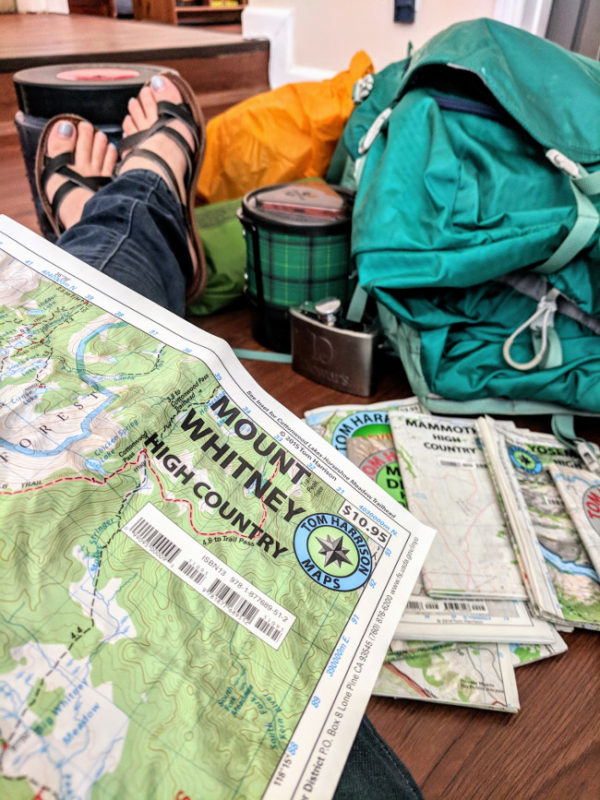
Decide On Where You Want to Go
Are you looking for high mountains and glacier fed streams? Or perhaps sandy deserts, spotted with cacti and brightly colored desert roses?
Whichever tickles your fancy, you’ll first want to determine where it is you want to go.
I’m not talking about which parks or trails – think broader.
What type of climate or environment do you want to explore? Are you okay with heat or do you do better in the cold? Do you get altitude sickness if you’re above a certain elevation?
All these and more will come into play when deciding where you want to plan your trek.
Also, keep in mind how difficult it is to get to the area and how far away it is.
You might rethink that overnight trip if it takes you 12 hours to drive there or requires an off-road vehicle that you don’t have.
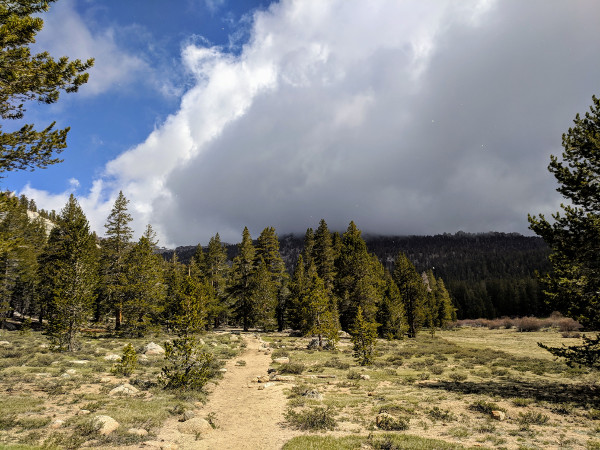
Decide When to Go
“Does it really matter when I go?” Well…yes, it does matter.
It’s best to plan ahead for which trail you want and when, then mark your calendar to remind yourself of when to apply for the permit.
To increase your chances of getting the permit you want, perhaps go in the off season.
Typical North American backpacking season is late spring to mid-fall since temps are warmer and days are long. But that doesn’t mean the rest of the year is off-limits.
While some trails will close during the off season, a lot are still open!
If the cold & snow doesn’t bother you, try snow camping in Yosemite during the winter or grab a permit for the Mojave desert in the spring but do the trek at night during a full moon. Both are incredible experiences!
Another useful tidbit is to go for weekday permits instead of weekends. You’re more likely to get the permit and have the trail to yourself.
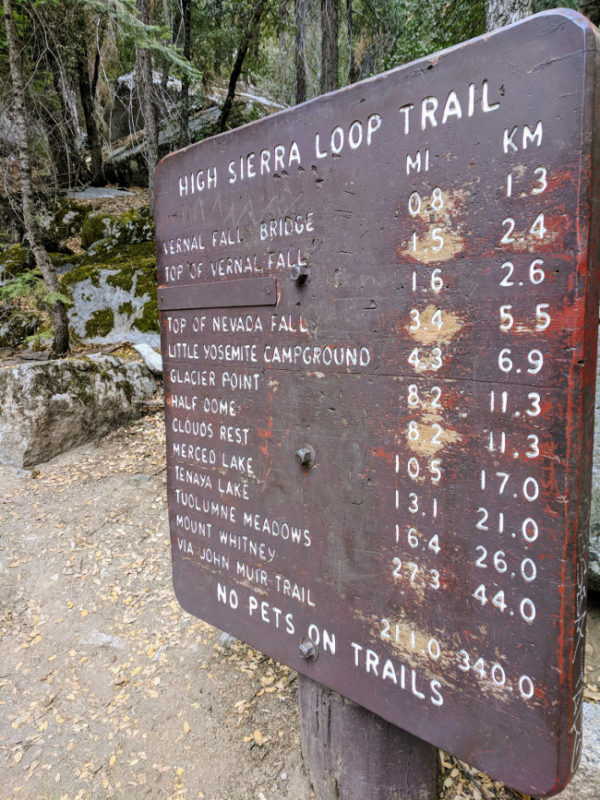
Choose the Right Trailhead & Plan You Route
Yes, the Pacific Crest Trail is pretty darn awesome (all 2,650 miles of it) but if you’re more of a casual backpacker, you may to want to try something a bit more manageable.
Sorry to say: this is where you need to be honest with yourself.
If you choose a trail that has extreme elevation changes or requires long mile and you’re not able to rise to the challenge, you could find yourself in harms way.
Use your best judgement to choose trails that are within your experience and hiking level.
Also look at the park’s main website to see if there are any restrictions or regulations that might alter your trip plans.
Pro-Tip: If there’s a longer trail you’ve been itching to do, try breaking it up into smaller, manageable miles with more days. It makes for a pleasant experience.
Related: The Ultimate List of Backpacking Luxuries
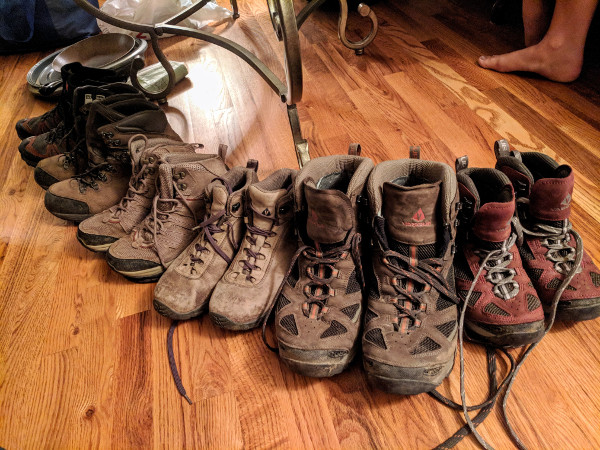
Find Friends to Go with You
Solo or a group that’s completely up to you! I’ve never done a solo trip (it’s on my bucket list) so I tend to go with a small group of people.
If you plan to do the same, check with the permit office first as you might only be able to get your permit for a limited number of people. Some parks have limited quotas.
This is especially true in places like Yosemite and Grand Canyon where the foot traffic can range from hundreds to a thousand a day!
Pro-tip: The less people on your permit, the high the chances are that you’ll get it.
I usually stick to about 6 people max unless it’s a sparse area.
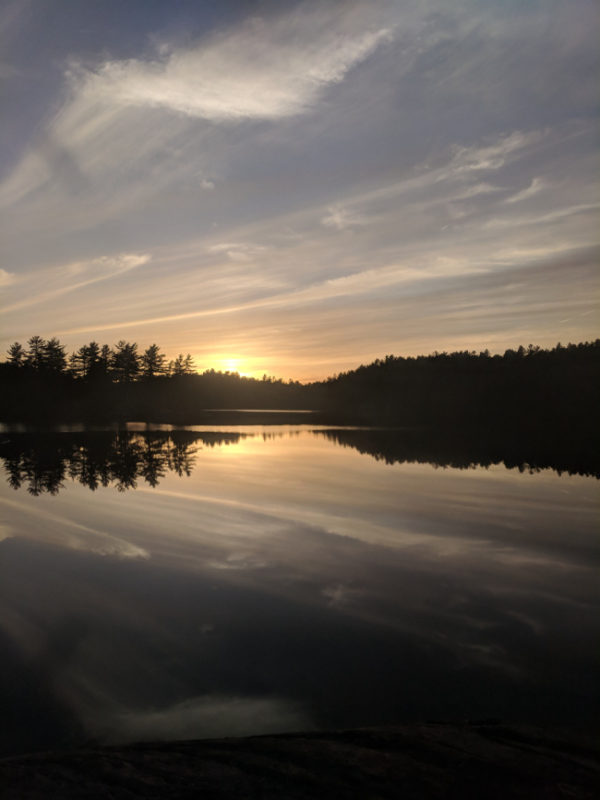
Have a Backup Plan & Flexible Dates
Just because you’ve submitted your permit and have paid the fee, doesn’t necessarily mean you’ll get the permit.
For highly sought after treks, you might be placed into a lottery – this happens with sites like Half Dome and rafting the Colorado River. Since the permit office receives a high number of applications, you’ll probably lose out the first few times.
That’s why having flexible dates for a particular trail or a backup is always good to have.
Related: The Ultimate Care Guide for Your Backpacking Gear
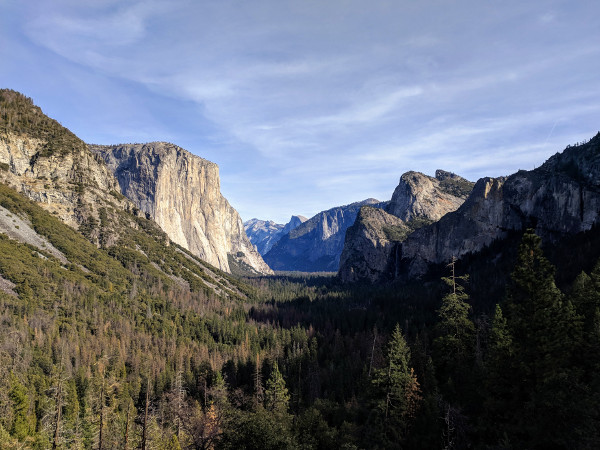
Mark Your Calendar & Set a Permit Notification
Permits for popular sites so FAST!
Backpacking has become more popular over the last 5 years with more and more people hitting the trails to beautiful destinations. That also means it’s getting hard to obtain those coveted permits.
Typically, permits are booked anywhere from 3-6 months in advance depending on the park. That means if you want to get that awesome Yosemite wilderness permit for July, you better book in January.
Some permits are only reservable during a specific time of year.
For example: permits for any date to trek to Havasupai can only be obtained starting February 1st. So mark your calendar!
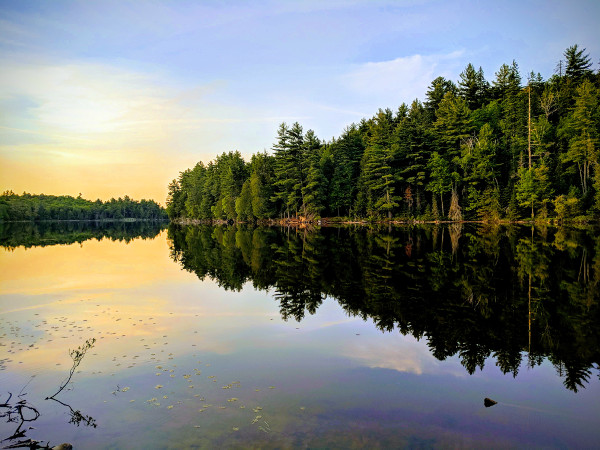
Use Recreation.Gov to Apply for Your Permit – Spam the Refresh Button
I honestly believe Recreation.Gov is the best gift to backpackers. It’s expansive, easy and you usually get your permit confirmation within minutes.
It’s also the site most national parks use for wilderness permits and will send you alerts for when certain coveted permits become available.
It also allows you to submit permit applications for several trails so if you aren’t able to get your first choice, you’ll likely get your second choice.
Keep in mind you’ll have to pay up front for your permit so have your account already established, a credit card ready and spam that refresh button like it’s Comic Con.
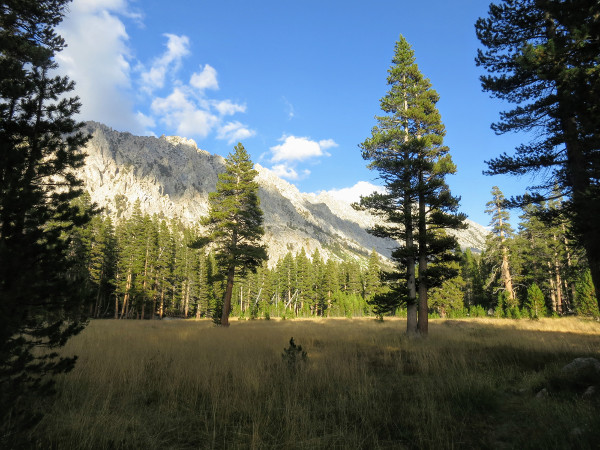
Email or Mail In Permit Application
Check the application directions for where you’re applying for your wilderness permit! I’ve made this mistake before and totally missed out on an awesome trip.
While most parks like Yellowstone and Yosemite allow you to spam the website for a permit, other places like the Grand Canyon require you to either mail in or fax your application.
Yes, mail in or fax. Like, with a fax machine.
Submitting your application the correct way will make it easier on the permit off and yourself – it sucks waiting around for your permit only to hear you did it incorrectly. So, no permit.
You may also want to get the phone number for the permit office of the park to check in on the application process.
Some permits are given immediately, usually online portals, but others will take weeks. Be patient.
Related: The Ultimate List of Backpacking Luxuries
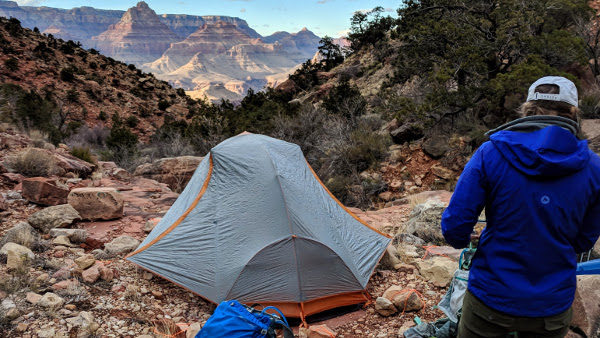
Pay for Your Permit
There rarely is such as thing as a free wilderness permit. And in the 4 years I’ve been backpacking I don’t think I’ve ever come across one.
Some are inexpensive and will cost around $10 for the permit, plus $5 per person. Others, like the Havasupai permit I received, costs $150 per person! Now that’s on the extreme side but some permits aren’t cheap.
Take into account the number of people you’re trying to get the permit for as a lot of parks will charge a permit fee (usually per night), plus a fee per person and/or vehicle. The more people on the permit, the more expensive it will be in some cases.
Usually you can pay ahead of time for your permit (done upon approval) but have a credit card or cash with you if you have to pick up your permit at an office.
Related: The Ultimate Care Guide for Your Backpacking Gear
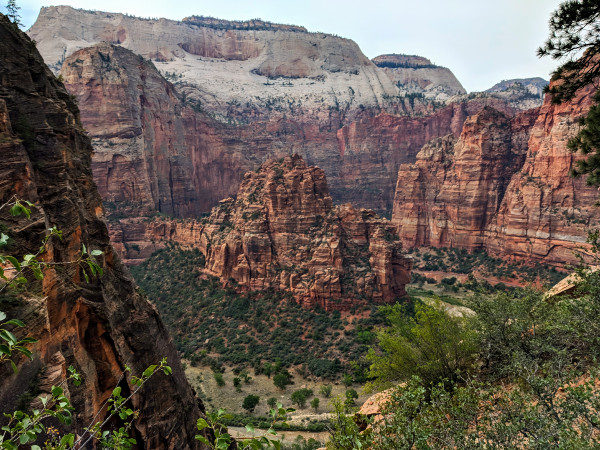
Pick Up Permit Before Your Trip
Do yourself a favor and find out where the permit office is before you head out for your trip.
Usually the offices are inside the park or close to it but hold normal business hours. This means if you don’t make it before they close, you’ll have to wait until the next morning to get your wilderness permit.
I usually factor in how long it’ll take to get to the permit office and then add the time to the trail head.
Allow a little extra time for traveling through traffic or getting to a walk-in campground if using one.
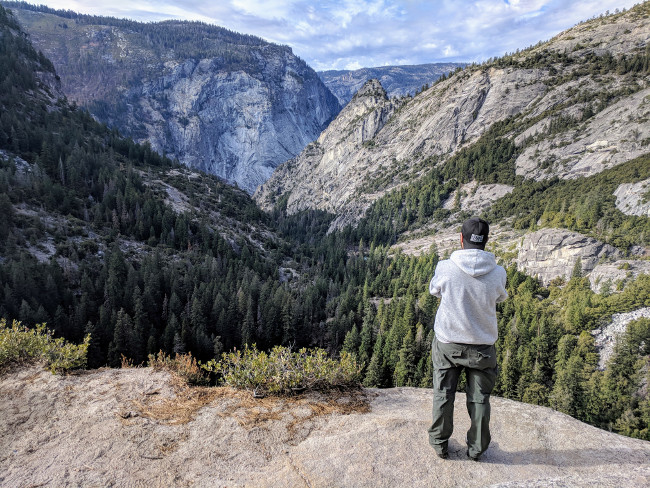
Always Carry Permit with You
I cannot stress this one enough. Always, keep the wilderness permit with you.
This is your ticket into the backcountry and proof that you’ve gone through the proper channels.
Like I said, if a ranger catches you without a valid permit you could be turned away from the park and/or hit with a heavy fine.
Best to put that permit in a safe place and have it ready to show if asked by a ranger.
So there you have it! It sounds daunting but it’ll becomes second nature and you’ll be booking trips like a pro.
Just remember to follow the rules of the park, carry your permit with you and have fun!
It’s the backcountry after all….and it’s calling.
